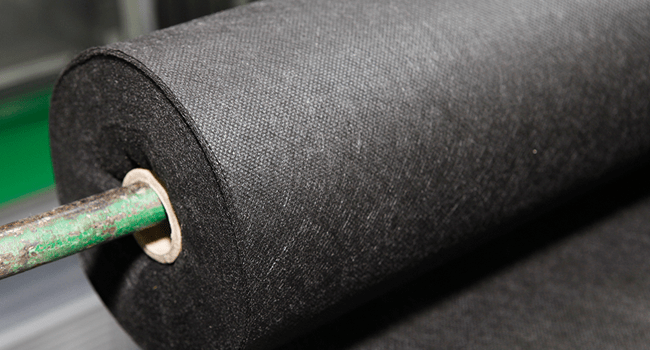According to a new report from Smithers,
The Future of Fibre vs. Polymer Based Nonwovens to 2027, there is a noticeable movement away from polymer-based processes towards more sustainable and plastics free fibre-based nonwovens. According to data from Smithers, global consumption of nonwovens in 2022 is 13.4 million tonnes or 368.8 billion square metres (m2), valued at $55.6 billion. Nonwovens can be split by their base: fibre-based, polymer-based, or fibre/polymer composite (or hybrid) based and compete for market share.
In 2022, fibre-based nonwovens accounted for 6.5 million tonnes or 135.9 billion square metres (m2), valued at $28.2 billion. This is about 48.5% of tonnes, 36.9% of square metres, and 50.7% of sales dollars of total nonwovens in 2022. Further, fibre-based nonwovens are projected to grow at 7.0% (tonnes), 4.7% (square metres) and 5.6% (sales dollars) for the 2022-27 period. Fibre-based nonwovens have the technological lead in 2022 for producing more sustainable and especially plastics free products; this should lead to faster growth in some market segments through 2027, though installed capacity and lack of acceptable products in some market segments will keep total fibre-based nonwovens growth modest.
In 2022, polymer-based nonwovens accounted for 6.7 million tonnes or 229.1 billion square metres (m2), valued at $26.6 billion. This is about 49.8% of tonnes, 62.1% of square metres, and 47.9% of sales dollars of total nonwovens in 2022. Further, polymer-based nonwovens are projected to grow at 6.7% (tonnes), 9.5% (square metres) and 7.7% (sales dollars) for the 2022-27 period.
Research for alternatives
The search for an alternative to polypropylene is underway in 2022, but polymer-based nonwovens trail fibre-based products, especially in developing acceptable plastics free nonwovens (or an acceptable alternative). But polymer-based nonwovens in 2020 have a huge installed capacity base, have one of the simplest learning curves and trouble-free equipment of all nonwoven processes, and products for some market segments with no widely acceptable current fibre based nonwoven alternative. This should keep polymer-based nonwovens competitive through 2027, while producers, suppliers and end-users evaluate alternative sustainable materials, like polyhydroxyalkanoates, olyhydroxyalkanoates/polylactic acid blends, recycled polypropylene and even spunlaid cellulose.
Composite nonwovens
Also of note is a small segment of the nonwovens industry is based on fibre/polymer composites or hybrids. In 2022, fibre/polymer composite based nonwovens accounted for 225,500 tonnes or 3.8 billion square metres (m2), valued at $752.9 million. This is about 1.7% of tonnes, 1.0% of square metres, and 1.4% of sales dollars of total nonwovens in 2022. Further, fibre/polymer composite based nonwovens are projected to grow at 5.6% (tonnes), 6.2% (square metres) and 5.2% (sales dollars) for the 2022-27 period. These numbers are more reflective of a small volume market with few producers, than potential for such products in the future. Still, through 2027, these products will remain small and even lose market share.
Covid-19 and supply chain issues
The Covid-19 pandemic significantly affected global nonwovens supply chains, with major material producers either shut down or limited by labor shortages, with global transport costs and supply altered. The Future of Fibre vs. Polymer Based Nonwovens to 2027 details how some nonwoven products exhibit excessive and exceptional demand (for example, meltblown for face masks or spunlace for disinfecting wipes) or exceptional lack of demand (for example, airlaid for table top products or spunlace for food service industrial wipes).
Also significantly affecting the market is the Russia-Ukraine war with most of the affects being energy related. Transport and energy costs have been significantly affected by the conflict as well as the indirect effect on the cost of petroleum/natural gas based raw materials. Despite these effects, the global nonwoven supply chain is resilient. Most nonwoven supply chains are back to a “new normal”, where costs are higher and speed to market might be slower. Export/imports are still disrupted and dependent on product, region, and price.
Regulations
The EU Directive on Single Use Plastics has garnered the most attention in 2022 from the nonwovens industry. This directive is primarily targeting marine litter but specifies a wide variety of products with a wide variety of actions. The main nonwoven end-use targeted is wipes, which fall under Sanitary Products. While no outright ban of wipes is suggested, action items requested include improved labelling, awareness raising measures (consumer education), and extended producer responsibility. The last item contemplates sharing the cost for litter removal with the wipe producer.
Another issue is the definition of plastics. In 2022, the definition currently is the one outlined in the EU’s REACH regulation. Simplistically, this defines plastics as any material which is chemically modified in its production. The EU has made specific rulings on some material. The definition of both lyocell and viscose rayon as “non-plastic” was a major advantage for nonwoven producers. The definition of polyhydroxyalkanoates as “plastic” with no special disposition is problematic as it is a leading candidate to replace polypropylene polymer and fibre
and is biodegradable.
